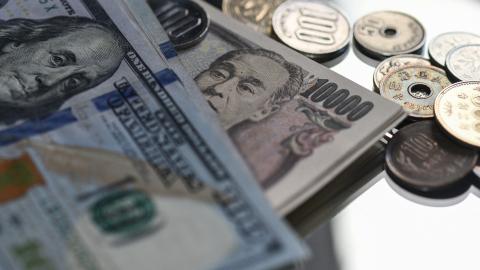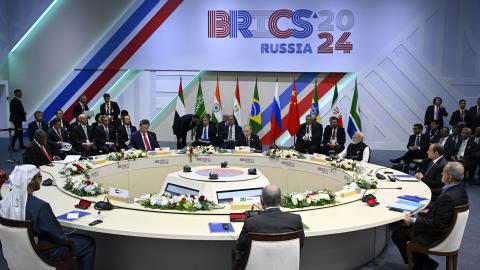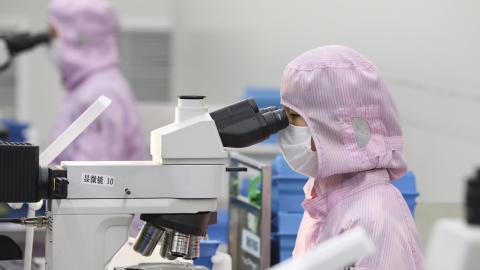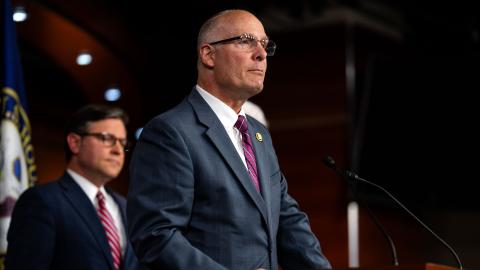This is the third in a series analyzing the psyches of those involved in the obesity debate. Last time, you met the restaurant operators and learned that keeping the kitchens running will always trump matters such as obesity. Today you get to meet their cousins, the grocers.
According to the Food Marketing Institute, there are more than 35,000 supermarkets in the U.S., and, last year, Americans spent $557 billion on groceries. But don't be deceived by this huge number; their profits are pitifully low, at only 1 to 2 percent of sales. This forces them to live in the present, since it is a survival-of-the-fittest business.
Like their restaurant-industry relatives, grocers can best be describedto use the gas/liquid/solid metaphor I've borrowed from chemistryas "solids." By this I mean that they are traditionalists who defend the status quo and value protocol and structure. Logical, organized, and realistic, they are quick to make decisions and get things done. They are well suited to dealing with a taxing retail environment.
Shoppers select almost 60 percent of the brands they buy during the act of shopping itself.
This means that grocers have undue influence over what consumers buy.
Those entrusted with managing grocery departments are responsible for a whole host of tasks, including the purchasing of food items, managing inventory levels, identifying and adopting new products, product merchandising, employee scheduling, delivering excellent customer service, and setting prices.
Concerns about competition and labor costs (they know these to the penny) often consume them. And close attention is paid to same-store sales compared to last week. But perhaps the worst six-letter word for a grocer, according to former Harris Teeter President Bob Goodale, is "shrink," the amount of money that walks out the door because of employee theft, shoplifting, and backdoor mistakes and dishonesty. With shrink over 2 percent and profits under 2 percent, this is a make-or-break matter that keeps grocers awake at night and forces them to be diligent about the details.
With this as background, it becomes obvious that attacking Big Picture issues such as obesity falls far down the priority list. Of higher import is the "now": squeezing a profit out of every square inch of the store.
One way grocers use their practical thinking skills to generate profits is to use "power" items to drag the customer through the store. These are the staples consumers buy, like bread, milk, bananas, ground beef, chicken, and eggs. Grocers know you need them and place them in far away locations, like the back of the store, to expose you to more of their offerings. It's very similar to finding your way through a maze.
Another way grocers "find" money is by getting food marketers to pony up in order to place their products in the best, most prominent locations in the stores. Bestselling national brands like Pepsi and Kellogg's pay handsomely for the privilege of being up front or more visible on the shelf. But oftentimes these fast-selling items come with a high-calorie sticker price.
Is there anything grocers can do to help us check-out with fewer calories? The answer is "yes," if they remember that shoppers select almost 60 percent of the brands they buy during the act of shopping itself. This means that grocers have undue influence over what consumers buy. It's time for them to exercise this power.
That means they can set up special sections for healthy kid's lunches, insist that certain display space be reserved solely for lower-calorie products, and add healthier snacks at the checkout line.
But are they likely to do this on their own?
Alas, like their restaurant kin, the "solid" grocers are unlikely to lead us out of the obesity mess. The business survives on razor-thin profit margins and those who toil there must simply attend to the day-to-day rigors of the grocery aisles. The grocer personality is not aligned with fixing a complex problem like obesity.
Only with pressure from the top will there be any meaningful change. Perhaps chains like Safeway, with their Healthy Measures program, or Walmart, which has taken a proactive role in forcing suppliers to be more environmentally responsible, can lead the way? The jury's still out, so we'll have to wait and see.
In our next feature, you will meet those sitting on the opposite side of the obesity table: the researchers, academics, and public health activists, otherwise known as the Food Police.

















